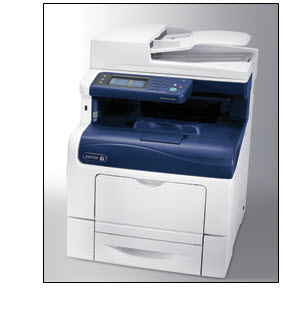Guest Post By Stephane Amicarelli, Enterprise IT Vice President, CGI
When colleagues hear that CGI implemented a global Managed Print Services (MPS) solution on time, on budget and without major setbacks, they seem surprised. After all, CGI is the world’s fifth largest IT and business process services company with 68,000 professionals in 40 countries. How could an enterprise of our size deploy MPS on a grand scale and still be smiling?
At our foundation, CGI operates via a highly disciplined management approach, one that has allowed us to achieve an industry-leading track record of 95% on time and within budget project delivery for our clients. This same approach is used for internal projects as well.
First, it helps to understand the project’s origins: We had reached the end of our contract with our North America managed print provider and we had completed a large European-based acquisition, with those offices handling print locally for years, buying their own equipment and signing their own contracts. We wanted to build a scalable MPS infrastructure in North America and roll it out worldwide. Today, I am happy to share our result: a successful global MPS solution that Xerox manages and supports (no more toner worries), with projected savings of $6.5 million over five years.
Here are the five steps that helped us get there.
Step #1: Do Your Homework
We didn’t make a move until defining exactly what our savings would be, where they would come from and what steps were needed to realize them. With the help of Xerox, everything was outlined in detail. We knew which devices were staying and which were going, which offices were getting what equipment and when, and so on.
Equally important, we identified all expenses up front. It wasn’t easy, but it enabled us to move forward without a single add-on cost. This wouldn’t have been possible without the insights of our regional leaders, which leads to step 2.
Step #2: Get Involvement from the Outset
From the start, we secured the buy-in of key CGI executives. We engaged multiple executive sponsors, including our Global Chief Information Officer and team of regional CIOs. Our goal was to ensure hands-on participation so that each business unit was involved and that their requirements and costs were identified up front.
As part of this governance, we held weekly meetings with constituents who actively shaped the solution. Issues were discussed promptly and regularly, not escalated, and ideas were shared. For example, after France requested a customized user authentication feature, the other regions discussed that they could benefit from this capability as well. Today, the feature is deployed worldwide.
Step #3: Phase into It
We structured our implementation as two distinct phases. The first involved replacing our outdated North American print infrastructure with a more efficient, modern MPS solution. The second extended the North American solution across the global enterprise, expanding services to South America, Europe and Asia-Pacific.
This gave us two opportunities to ensure that we were developing the optimal solution. It also enabled us to roll out across North America while building a pilot scenario in Europe to validate the global deployment.
Step #4: Build It and They Will Come
To borrow and paraphrase a line from Field of Dreams, when you build it, they really do come. In our case, “it” was a model office in the Netherlands that replicated the North America MPS solution, from multifunction devices to the network itself. Regional leaders were invited to preview the offering and provide input.
We tested printers, applications and multiple scenarios to make sure each region’s needs were met and to address any configuration and operational issues. This allowed us to adapt the solution for each region, while maintaining a consistent set of services and equipment. We also avoided deployment delays because obstacles were removed in advance.
Step #5: Look beyond the Devices to the Data
While the efficiencies and savings of MPS are undeniable, I believe the greatest value is yet to come. Now, we have visibility across the entire enterprise in terms of print management and its costs.
I have reports on usage and volume, so I can see where we’re making – or not making – good use of our devices. I can say “I want to bring costs down by 10 percent,” and know where to start. In short, I can analyze our print expenses to create solutions for future savings.
The Step That Simplifies All Others
When your MPS goal includes a single vendor with a single solution and a single support model, it’s essential to find a good partner. That step makes the other steps much easier. Having the right people on both sides of the team can make all the difference in the world, especially when your solution is being rolled out across it.




Xerox has a Strategic Alliance with numerous partners globally!